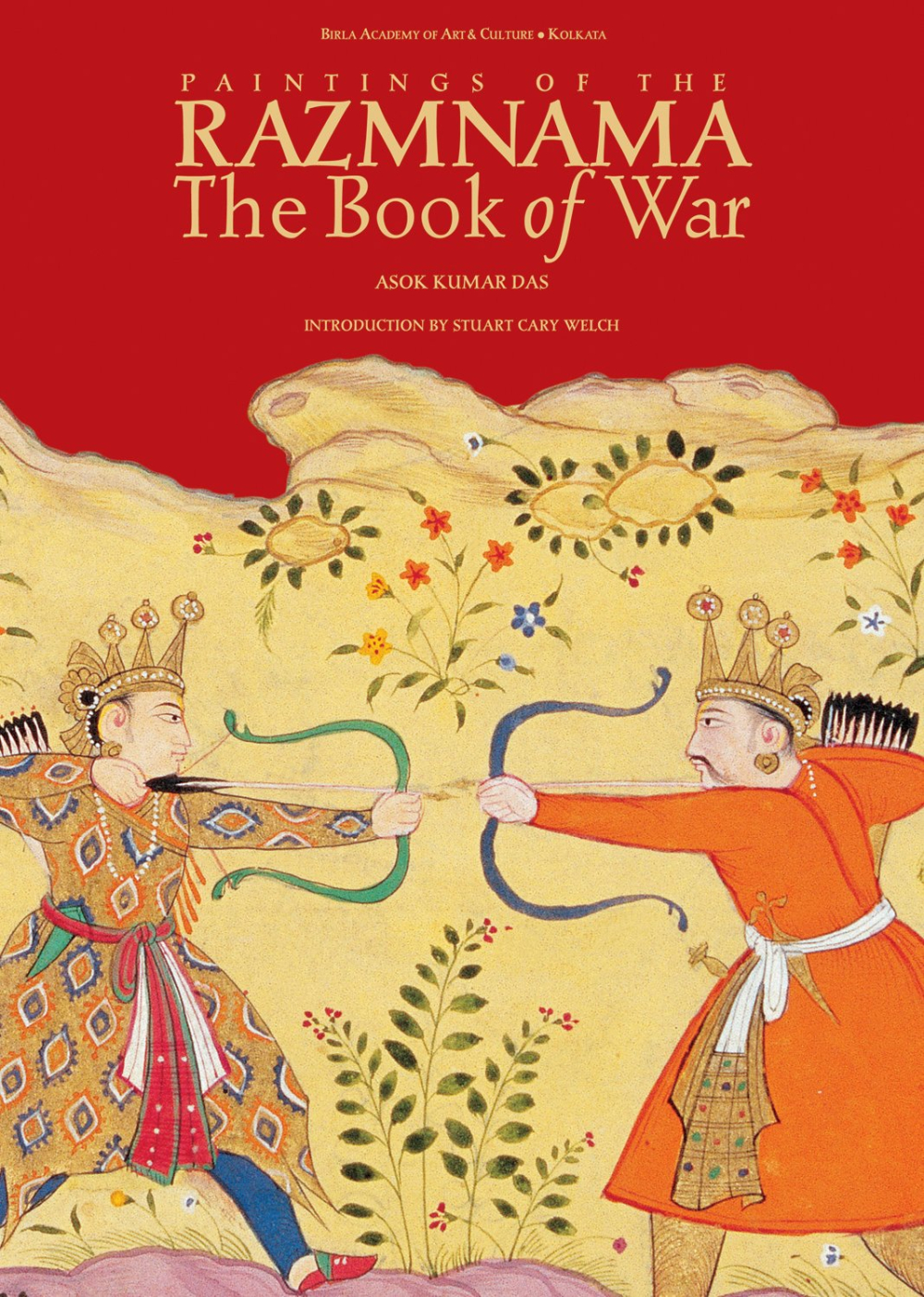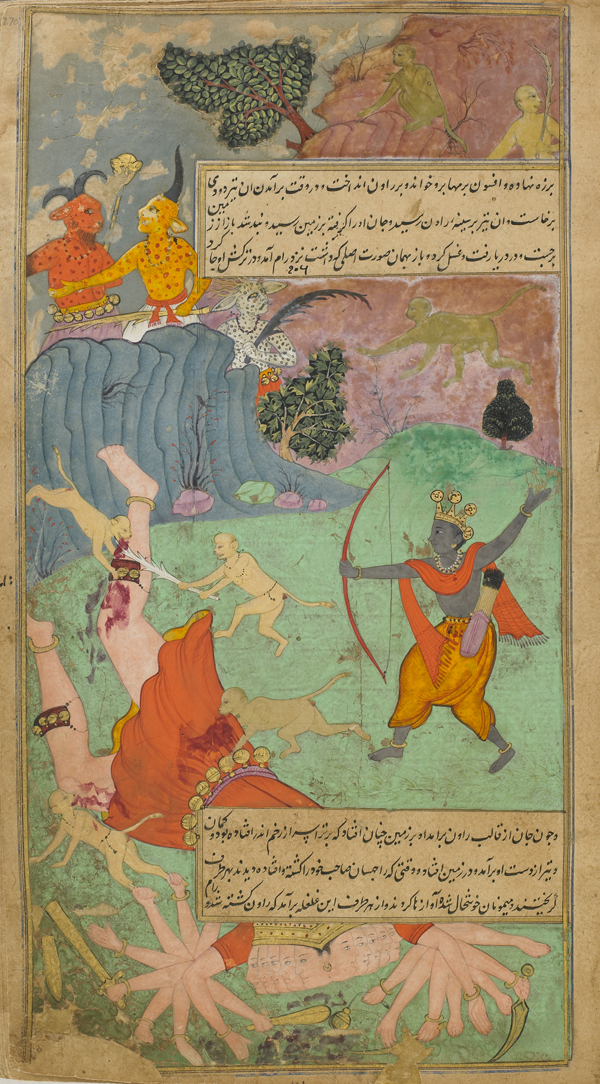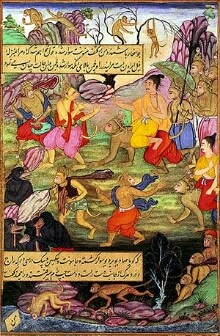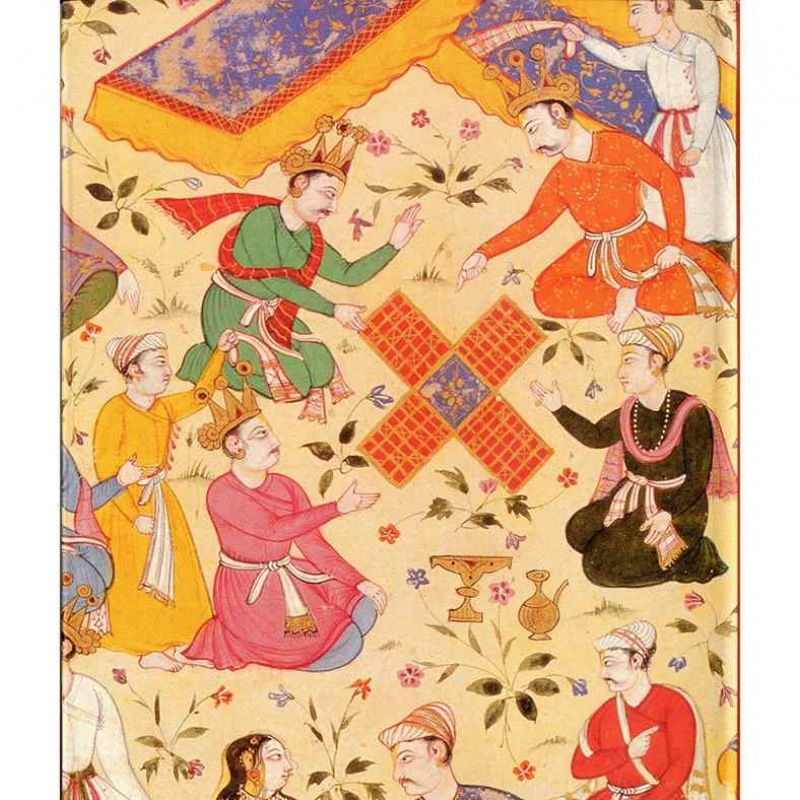A Ramayana? For the Mughals? So closed are our minds, and so firm our prejudices, that the two words would be seen by most people as if they contained a natural contradiction. Prof. B.N. Goswamy writes about the Mughal version of Indian epics that were produced at and for the Mughal court in the sixteenth century. (In pic: A folio depicting the Chosar playing episode from Razmnama; Photo courtesy: Wikimedia Commons)
This article appeared originally in The Tribune, Chandigarh, and is reproduced here with permission.
In the tragically parochial, and strife-torn, age in which we live, there are many who would be startled at even the barest mention of the subject on which I write this piece. A Ramayana? For the Mughals? So closed are our minds, and so firm our prejudices, that the two words would be seen by most people as if they contained a natural contradiction. And yet one knows not of one Ramayana manuscript, but of many—some of them brilliantly illustrated—that were produced at and for the Mughal court in the sixteenth century.
Related | Ramayanas of Wayanad
The interest in getting Valmiki’s great text translated into Persian, we know, was first taken by the emperor Akbar himself. The chronicler Badauni, whom one knows as a bigot, recorded the emperor’s interest in the ‘old and venerable texts’ of India. "Now he ordered", Badauni wrote referring to the emperor, "those Hindu books, which holy and staid sages had written, and were all clear and convincing proofs, and which were the very pivot on which all their religion, and faith, and holiness turned, to be translated from the Indian into the Persian language, and thought to himself, ‘Why should I not have them done in my name (i.e. at my own initiative)? For they are by no means trite, but quite fresh, and they will produce all kinds of fruits and felicity, both temporal and spiritual . . ." The Ramayana was not the only text taken up as a result: there were others, including of course the Mahabharata, which was renamed the Razmnama in Persian translation. Much thought lay behind all these enterprises, as Abu’s Fazl, that great chronicler and admirer of the emperor, wrote: "Having observed the fanatical hatred between the Hindus and the Muslims, and being convinced that it arose only from mutual ignorance, the enlightened monarch wished to dispel the same by rendering the books of the former accessible to the latter."

From getting these works translated to having copies of them illustrated was but a short step, considering the wealth of talent that was there in the ateliers attached to the Mughal court. The imperial copy of the Ramayana, completed in 1588 and now at Jaipur, ranks among the noblest products of the court, for some of the greatest of Mughal painters were involved in the project. Other illustrated manuscripts of the text have also survived, many of them now designated by art-historians as being ‘sub-imperial’. Among them, of course, is the copy that was commissioned by Abd al Rahim, Khan-i Khanan, the celebrated noble at the court. The Khan-i Khanan’s copy has an importance all its own, for it bears, on its fly-leaf, a long note in Persian, in the great noble’s own hand, introducing the book, and giving the circumstances in which it was produced. "This book", wrote the Khan-i Khanan, "which is known as the Ramayana, is among the esteemed books of India. It is an account of Ramchandra, who was one of the great kings of India. His external and spiritual graces were exemplary, being manifestations of divine attributes." He goes on in this strain, speaking of how Naqib Khan wrote the text, translating it with the help of Devi Missar, a Brahmin, who was learned in Sanskrit. And, finally, of how this work was completed by the scribes and painters working for the noble, after the emperor himself had shown him a personal copy of the book which he possessed, and allowed him the privilege of having a copy of it made for his own use.
Also see | K. Satchidanandan on Alternative Ramayana Narratives
Is all of this turning into a lesson in art history? Perhaps it is. But there is little wrong in our being able to read, through this, meaning in these facts, to see beyond the rigid, uncompromising categories into which we tend often to cram our prejudices, our preconceptions. In any case, I need to get back to the point with which I intended to start: ‘another’ Ramayana. That Ramayana, painted leaves from which are now scattered, but have been steadily appearing on the art market for some time, comes as even more of a surprise. There are some exquisite folios in the manuscript, many of them renderings of well-known episodes—among them, the delicately done scene of Hanumana being embraced by Rama after he returns from Lanka with news of Sita—with floating panels of Persian text integrated into the image. But the surprise I speak of consists of the fact that the manuscript seems to have belonged once to the mother of the emperor Akbar, Hamida Banu, often referred to with the title of ‘maryam makani’, ‘dwelling at the same loftiness as the Virgin Mary’. There is increasing evidence that Hamida Bano was a collector of books in her own right, for some very early manuscripts—dating back even to the days when Humayun had just conquered India again—bear her name, and the impression of her seal, indicating her ownership of these. On the fly-leaf of this Ramayana, too, there are numerous seals and inscriptions, among them a note that this manuscript, completed in 1593, was viewed by maryam makani in August 1604, apparently when she was on her death-bed. There are other seals and dated notes on the leaf, including inspection notes by the emperors Jahangir and Aurganzeb, in their respective hands. Apparently, this was no ordinary manuscript. For, to its intrinsic value as a work of art (one note records the price of the work as 550 gold mohurs) had been added—in the eyes of the two emperors—the immeasurable value of the fact that it had once been touched by the hands of a revered ancestor of theirs.


Records of Facts
The seals and signatures and notes that appear on Mughal manuscripts are an endlessly fascinating subject in themselves. On the same manuscript, sometimes, one might find a note in an emperor’s hand saying that he had come into possession of ‘this manuscript’, on the day of his accession, with ‘the Grace of God’; a librarian’s note recording having taken charge and inspected the manuscript on a certain date; an accountant’s record of the value that was paid for the manuscript; a late owner’s scribble about the source from which he acquired the work. All this, apart from those exquisite seals one finds impressed upon them. The breath of history is on these pages.
This article has been republished as part of an ongoing series Art N Soul from The Tribune.













